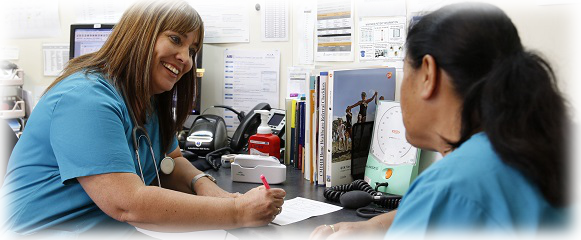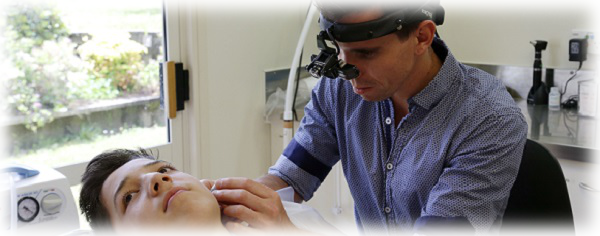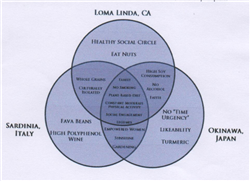December Newsletter
Hi again to everyone in the Millhouse Community
We have now finished the festive season and 2013 is here. How did you fare in 2012?
Lifestyle Changes
I have been amazed how many have positively incorporated lifestyle, exercise and diet changes into their lives when diagnosed with diabetes and heart disease. Some of you embraced the 'Diabetic Conversations' and shared your journey with Practice Nurse Rhiannon and the patient group. Others joined the East Health Primary Health Organisation (PHO) programs; HEALS (Healthy Eating & Lifestyle), Smoking Cessation and Self-Management Education. These programs continue in 2013.
I congratulate all who successfully stopped smoking this year and made one of the most important health choices you can make.
Thank you to the Millhouse Team, community and hospital support services
I am incredibly grateful to the Millhouse Team for their enthusiasm and support as they worked with you during times of sickness, screening for disease and assisting in obtaining appropriate medical services. We also received tremendous support from East Health PHO, local specialists, hospital and support services.
Performance Management Award for Third Year
The Millhouse Integrative Medical Centre for the third consecutive year received the East Health PHO supreme clinical management distinction. The PHO compares the effectiveness of vaccination programs, mammography and cervical smear screening, smoking cessation, cardiovascular and diabetic risks assessment of the local 22 clinics and makes the award to best performing practice.
In this issue...
Thanks for a great year - including the top Easthealth award again.
New Website and Logo
Telephone Appointment Survey Findings and Online Appoinments
Books for Sale
This month Dr Ric writes about
Longevity
For your information -
Remember all prescriptions requested can only be picked up at 128 Millhouse. Please give 24 hours notice.
New Website
Check out the new website at www.millhousemedical.co.nz. What do you think? Hopefully this will improve our communication and enhance our ability to inform on strategies to improve your health.
I have incorporated the new logo on the practice newsletter. Some have asked what the logo stands for. The sign is a symbol that incorporates unity, diversity, life & growth, individuality and team effort. If you see other messages in this sign please let us know.
Newsletters
All past newsletters are available on line and the website can be searched for specific information.
Telephone appointments
The patient survey earlier this year indicated that over 70% would prefer e-appointment access. We hope this online facility should be up and running in January, allowing you to bypass the early morning phone congestion or make an appointment at any time of your choosing.
From the Millhouse website you will be taken to ConnectMed where you will need to undertake secure registration which will then allow direct access to the appointment screen where you can select your doctor and preferred consultation time.
Books for Sale.
'Dr Gundry's Diet Evolution' (discusses diet intervention for cardiovascular disease, and weight loss) and 'The Inside Tract' ( self-management of digestive disorders) are available at reception.
In this final newsletter for 2012 I discuss further aspects of nutrition, diet and disease.
In 1977 I began rural practice in Dargaville, a farming service centre with a large indigenous Maori population. I soon developed an interest in animal and human nutrition. I remember Harry, a sheep farmer who suffered from heart disease, saying to me. "I supplement my cattle and sheep with selenium to improve their health; the soil and animals are deficient and probably I am too. Do you think I should take selenium also?"
My dairy farmer neigbour Ian told me how selenium drench effectively cured 'ill thrift' in his dairy herd. Cows (and sheep) with ill-thrift are slow to gain weight even when plenty of grass is available. Their coats lose their sheen, they are thin and scrawny and what really concerned Ian was the cows had difficulty getting pregnant. There are other reasons for ill-thrift which include intestinal worms, infections, copper, cobalt and iodine deficiencies, but for Ian the supplementation of selenium to his dairy herd improved animal welbeing and made farming more profitable
I also read Dr Weston Price's book 'Nutrition and Physical Degeneration'. Price, a dentist in the 1930's, toured the continents of the world studying the teeth and facial features of local and indigenous people. His itinerary included New Zealand where he studied the Maori. Prior to colonisation Maori skulls showed less than 1% dental caries (holes in the teeth).
Price noted that Maori in isolated communities had less than 2% dental caries, where as the modernised groups had up to 50% and the majority of them showed deformed dental arches (opposite to the 'Colgate Smile' where all teeth are uniform and perfectly placed. See Figure One at right). The worst affected Maori with tooth decay and deformed dental arches were found in the tuberculous sanatoriums. Price commented that 'the breakdown of these people comes when they depart from their native food to the food of modern civilisation'.
Tooth decay is less common now with improved dental hygiene, but deformed dental arches and crooked teeth are often seen. Many children receive remedial orthodontic treatment with braces to straighten their teeth. Price had a special interest in improving a mother's nutrition in pregnancy and lactation, giving enriched full cream milk with cod liver oil, animal (including organ) meats, vegetables and seafoods to improve dentition and growth. (see Figure Two) The mother's first child (left side) with deformed teeth received no special food during pregnancy but in the second the mother received supplementary food and the child developed a normal full dental arch. (Price notes that the time in labour for the first child was 53 hours and the second 3 hours. The first child at age ten years had a underdeveloped jaw, was a mouth breather and of a nervous deposition whereas the younger at six years had normal facial bone proportions and breathed easily.)
Remember that quality nutrition in pregnancy is vital for the developing baby, the success of pregnancy and for life long health.
This year I journeyed to Canada and Alaska on vacation and thoroughly enjoyed the wilderness experience, but I'm reminded as I write that colonisation brought a darker side to the health and well-being of Canada's Inuit indigenous people.
For thirty years German born Doctor Otto Schaefer lived, worked and studied the Inuit people of Canada where westernisation proceeded unevenly across the Arctic Circle. As the Inuit changed their food source from mostly wild game to highly refined processed foods, they began suffering from Western diseases. He noted intially a wave of appendicitis and that teeth began to rot. The younger generation grew much taller than the older and girls reached puberty at an earlier age. Adolescents developed acne for the first time. Asthma and heart disease appeared conditions that had not been seen before. Tumours of the nose, throat and salivary glands, probably caused by Epstein Barr viral infections, became less common, but the first cases of breast, cervix and colon cancer appeared. These are the diseases of our community.
Medical School teaches little about nutrition in human health and even less about the factors that enable successful living beyond 100 years of age; the blue zone. In 2008, the National Geographic investigator Dan Buettner described in his book 'The Blue Zones' a number of worldwide communities who actively live and work beyond 100 years of age. The Venn diagram ar right highlights the characteristics of three groups; the Loma Linda Seventh Day Adventists in California (a community who until very recently had avoided the fast food Mcdonald's chain setting up shop in their area), the Okinawan Japanese and the Sardinian rural mountain community.
These active centenarians are found living in supportive communities. They are physically active and eat a variety of plant based whole foods and nuts. The Okinawans use turmeric which is a powerful anti-inflammatory spice. The Sardinian consume fava or broad beans that contain generous amounts of L-dopa which benefit brain activity and drink wine with the highest containing red pigments (including resveratrol).
I encourage you to eat wholesome food, supplement when deficient with vitamins, minerals like selenium and essential fatty acids (omega-3 fish oils). Use generous quantities of the spices turmeric, ginger, cinnamon, sage and cumin in cooking. Take particular care with nutrition in pregnancy.
Exercise regularly. Relax. Live joyfully in community and do something positive for yourself and others each day.
Do enjoy this Xmas season and may good health be yours in 2013.
Yours in good health
Dr Richard J Coleman
www.millhousemedical.co.nz









